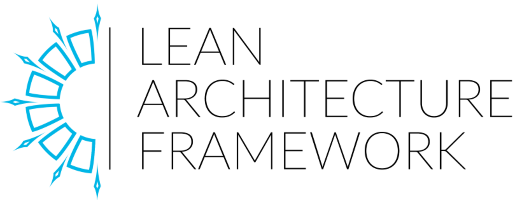Glossary
LAF uses four basic concepts that have many meanings depending on the context in the IT world. Those are:
- Application – a software program or a group of software programs that are designed for the end-user.
- Component – a software program or a group of software programs that have an implementation of one or more capabilities. The most common components are Applications but the definition also includes cloud services, integration services, microservices and others.
- Capability – the expression or the definition of the Application’s or Component ability to fulfill an organization core functions’ performance. Mostly it is the main role and functionality of the Application or Component.
- Requirements – the requirement that the business defines for Applications, Components.
Although the Component is a more general definition, the following definitions of Applications and Components are treated interchangeably due to the fact that they participate in the same architectural practices. The use of the word Application makes it easier to receive this study.
Introduction
The pace, frequency and scope of changes in the world around us force a change in the approach to change management. Since change management has become a new standard, not an emergency, it means that only a continuous transformation of the company will allow it to survive nowadays.
Lean Architecture Framework is a collection of good practices thanks to which the IT environment will respond consistently and quickly to a changing business situation while maintaining its consistent form. It does this by appropriately placing the Architect in the software development life cycle. The architect with the right knowledge can quickly make good decisions.
LAF not only contributes to the implementation of continuous transformation, it also actively supports it. LAF does this through constant changes in architectural goals and continually striving to achieve them.
LAF supports the commitment of all architects and businesses by building agreements between them striving to build a lasting healthy relationship between them. Thanks to this, it allows the personal development of architects working in the organization, which in return has a direct impact on making good decisions regarding the IT environment.
Innovation is the heart of LAF. At work, day after day, the architect has the opportunity to propose new solutions during direct cooperation with business. LAF supports the dissemination and implementation of business ideas throughout the organization.
The main characteristics of LAF are:
| Simple | LAF is easy to understand and short |
| Pragmatic | LAF concentrates only on activities that provide values and nothing more. |
| Adaptable | LAF is easy to adapt to the specifics and needs of the organization |
| Complete | LAF is used to manage all aspects of complex IT architecture environment, it is a full-fledged solution which contains proven guidelines to support it |
| Enables Architectural Agility | LAF support constant respond to a current situation of organization and adapting to the changing business environment |
Why good architecture is needed
Every large organization needs to manage IT architecture, especially the Application landscape to stay cost-efficient, flexible and open for a change, not just as a single business area or Application but as a whole organization.
LAF framework is responding to these needs providing full guidelines by defining roles, events and artifacts.
The main goal of implementing LAF in organizations is to:
- Control complexity of IT Application landscape by preventing it from uncontrolled growth and duplication of functional capabilities within the organization,
- Deliver an architectural paths enabling a business and technological growth of the organization,
- Keep a Component stack up to date, preventing it from technical degradation and become a legacy system or/as well as technical depth,
- Embed organization goals and mission into software development life cycle providing a better understanding of them across the organization,
- Support organization flexibility for adoption, resiliency to demanding markets and continuous competition,
- Keep cost at the optimal level,
- Protect the organization from a technical bankruptcy.
LAF acknowledges the fact that today’s organizations are in constant pressure of demanding markets and their competitors and that is why organizations need to be in continuous transformation instead of a big transformational project which can hardly keep up with a changing market. As a result of properly managed IT, architecture organizations are cost-optimal with a consistent environment ready for further growth and extension enabling business momentum.
Every organization has their own process of delivering software SDLC, either it is based on Agile ways of working like Scrum,XP, Less, SAFe etc. or more traditional approaches like waterfall, but all of them need architectural guardrails to stay consistent and to be ready for changes.
